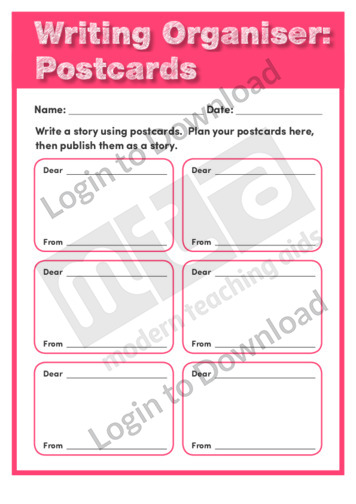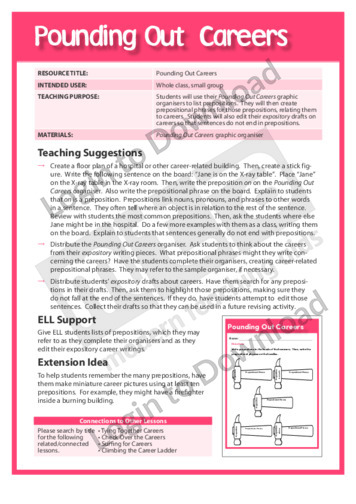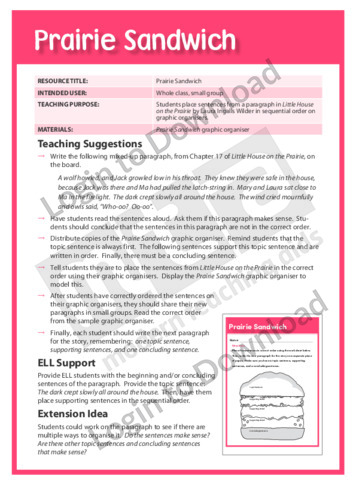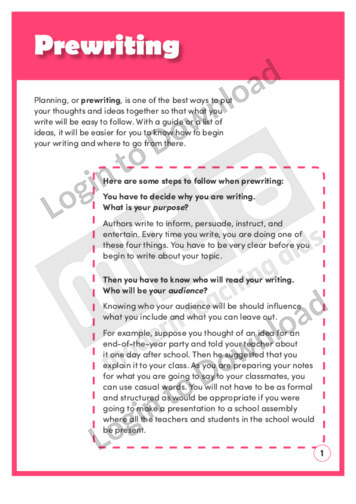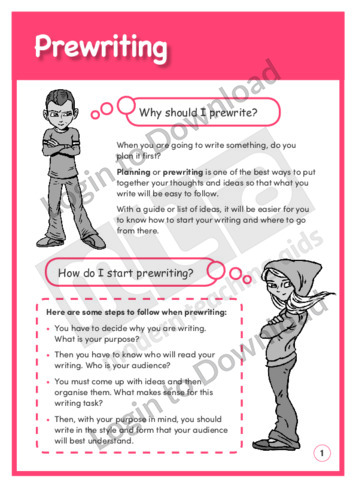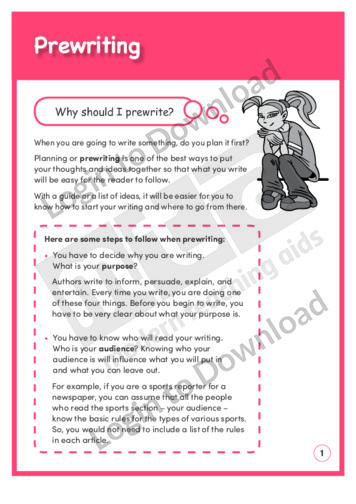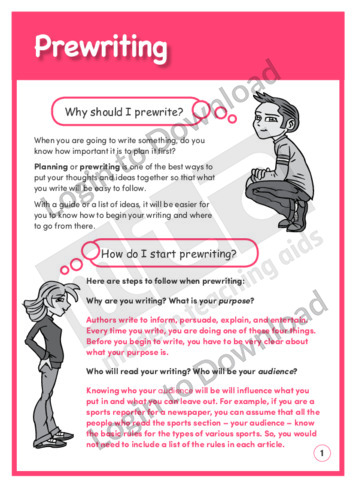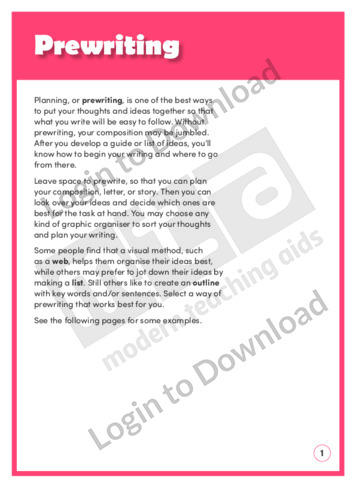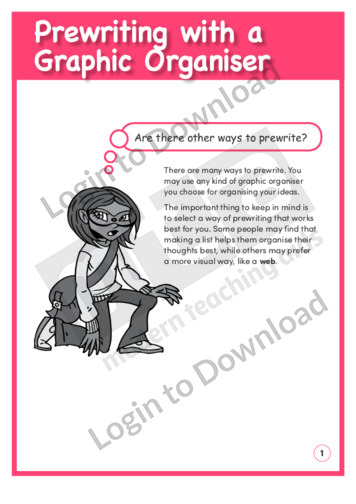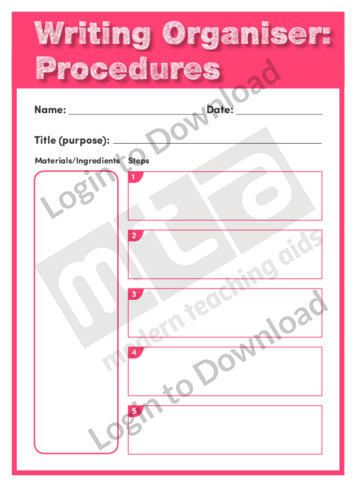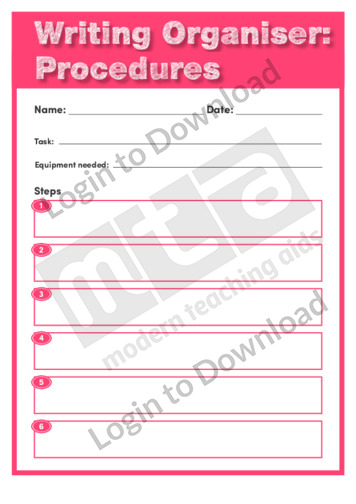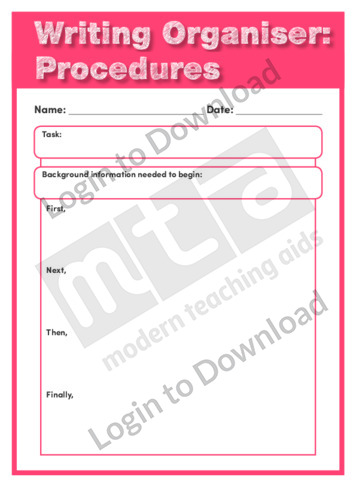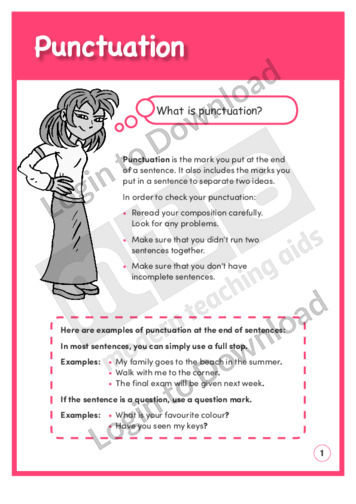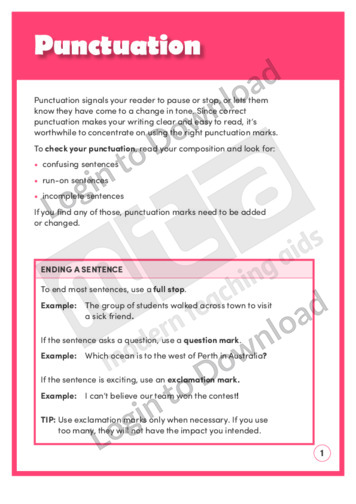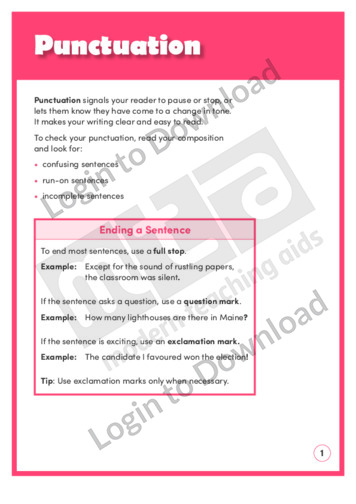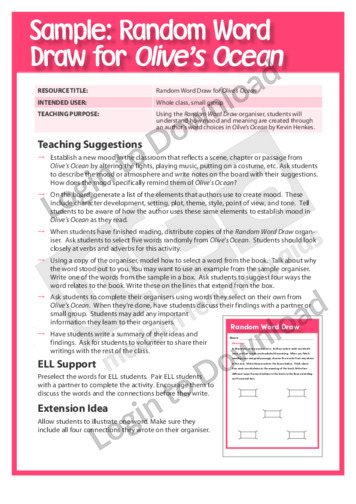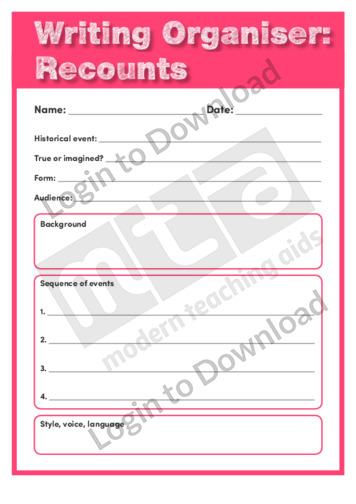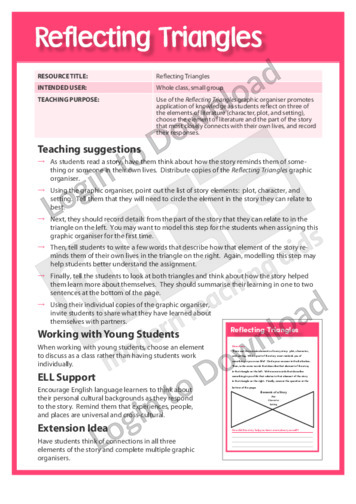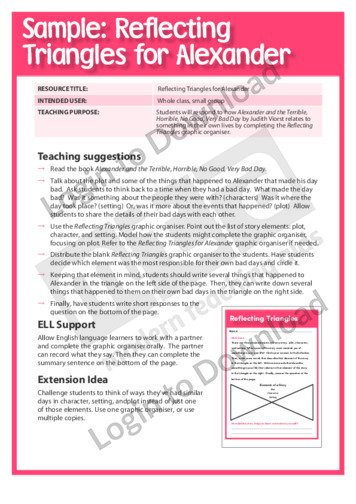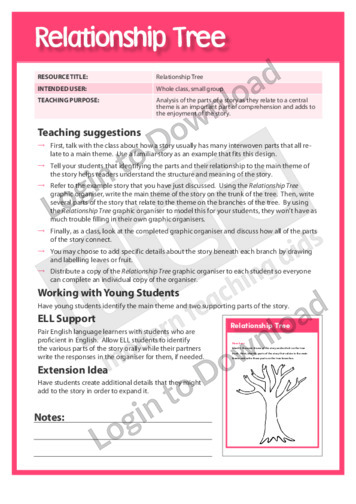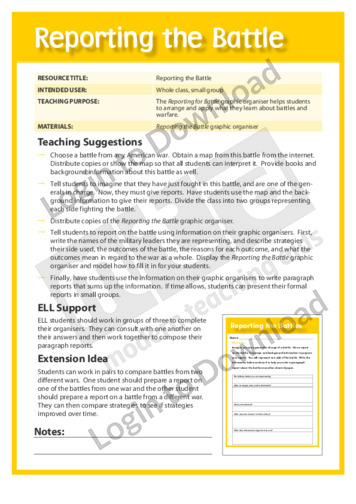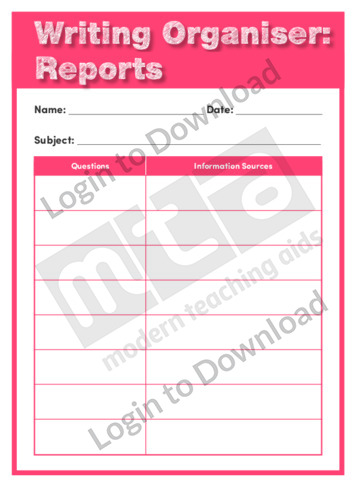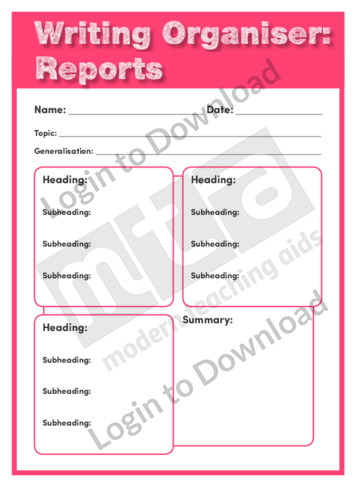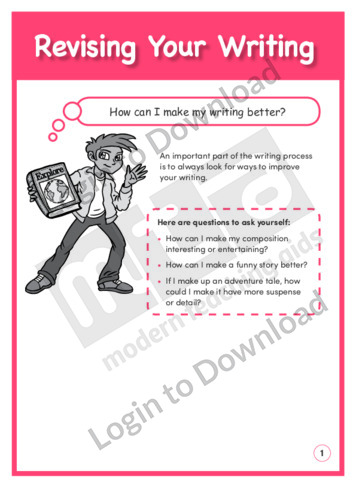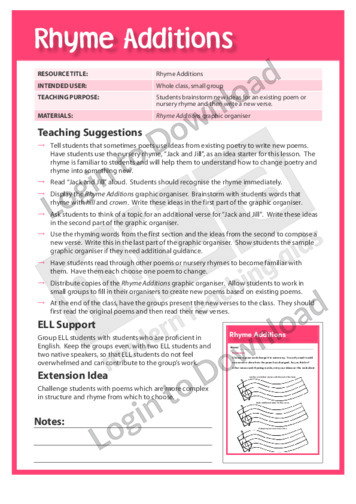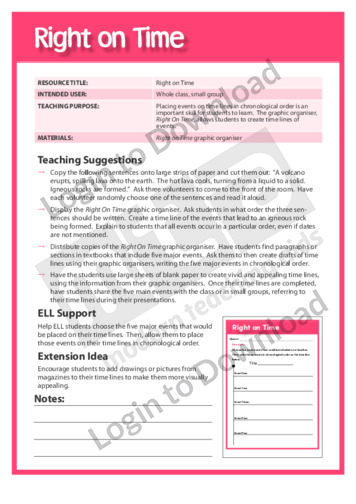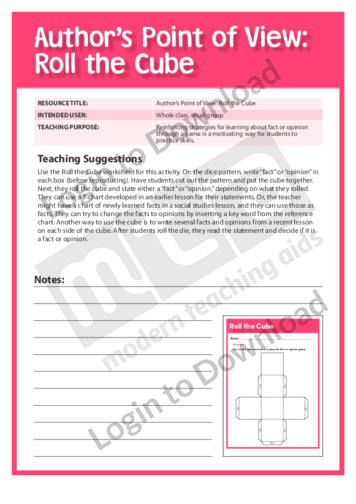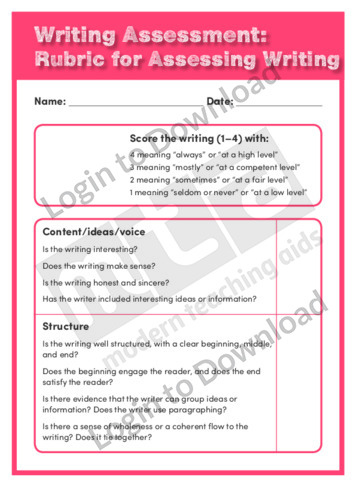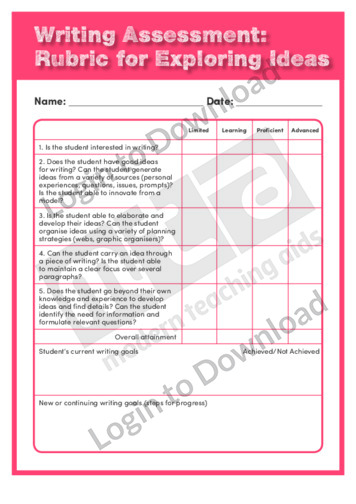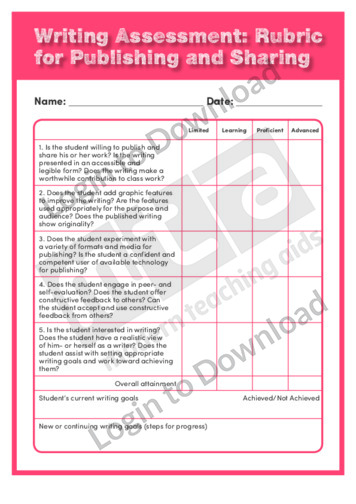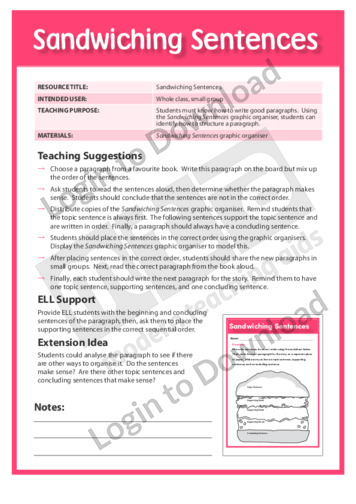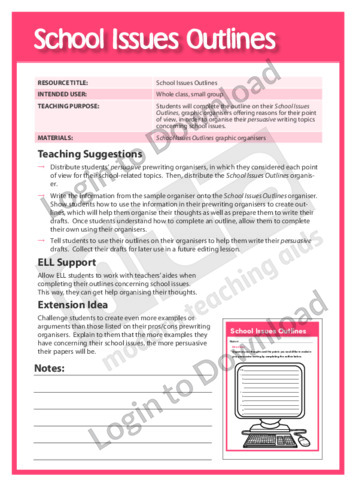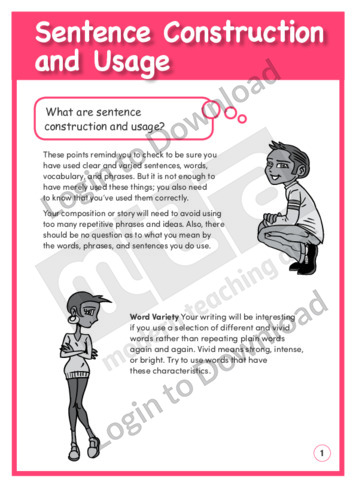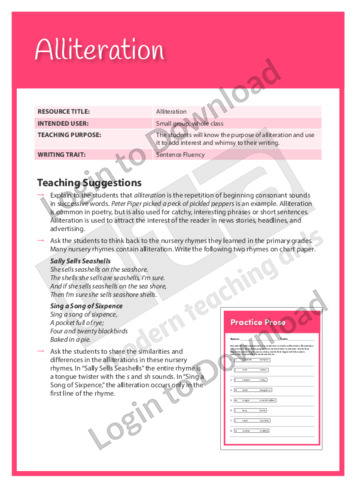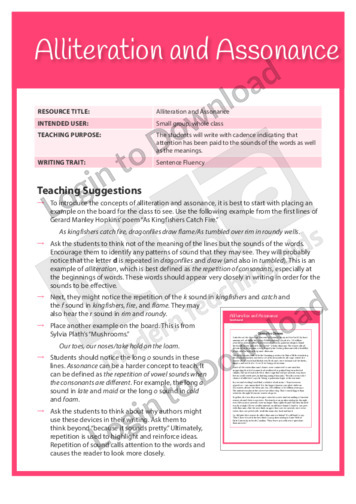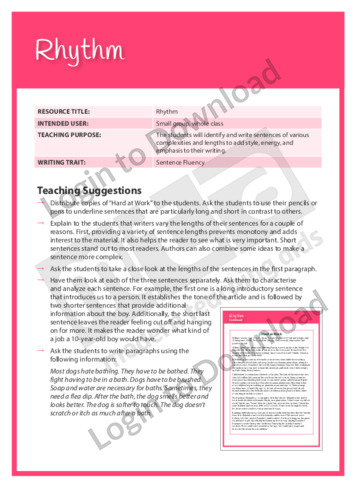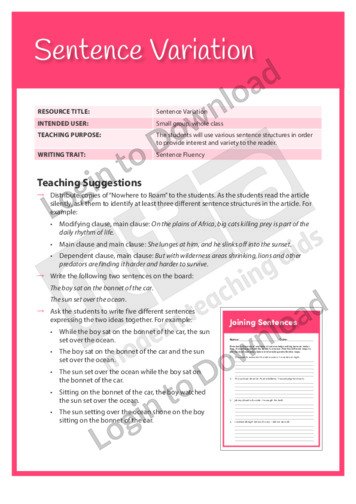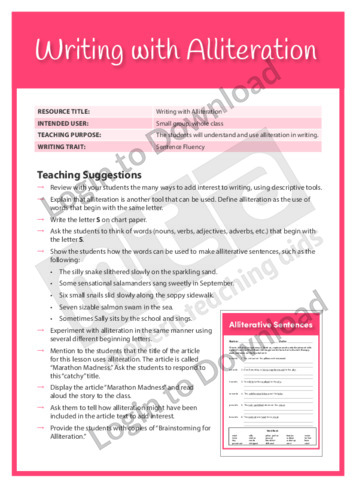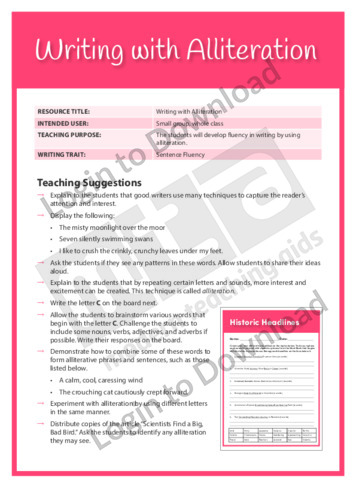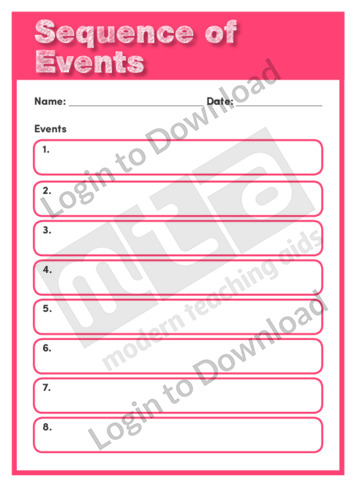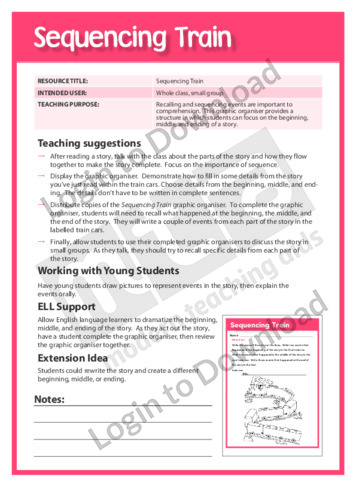This writing organiser ‘Postcards’ supports students to plan for writing a text using postcards as a way to tell a story.
This graphic organiser, ‘Pounding Out Careers’ supports students in editing and revising their career writing, focusing on correct use of prepositions.
This graphic organiser, ‘Pounding Out Prepositions’ supports students in editing and revising their writing, focusing on correct use of prepositions.
This graphic organiser, ‘Prairie Sandwich’ asks students to place sentences from the book Little House on the Prairie into sequential order.
This quick reference chart ‘Prewriting’ shows students how to plan and organise their ideas before they write. It introduces students to the principles of prewriting including planning for the purpose, audience, organisation and style of their text before starting to write. It includes examples of using a list, outline and web as ways to organise …More
This quick reference chart ‘Prewriting’ helps students to plan what they want to say before they write. It introduces students to the principles of prewriting and the steps to follow, including planning for the purpose, audience, organisation and style of their text before starting to write. It also provides a checklist for good writing that …More
This quick reference chart ‘Prewriting’ helps students to plan and organise their ideas before they write. It introduces students to the principles of prewriting and the steps to follow, including planning for the purpose, audience, organisation and style of their text before starting to write. It also provides a checklist for good writing that includes …More
This quick reference chart ‘Prewriting’ helps students to plan and organise their ideas before they write. It introduces students to the principles of prewriting and the steps to follow, including planning for the purpose, audience, organisation and style of their text before starting to write. It introduces students using a list and outline as ways …More
This graphic organiser, ‘Prewriting with Peers’ supports students in planning writing using brainstorming as a prewriting strategy.
This graphic organiser, ‘Problem/Solution’ helps students to list problems by asking who, what and why. It encourages students to come up with possible solutions.
This writing organiser ‘Procedures’ supports students to plan for writing a procedural text to show how to do or make something.
This writing organiser ‘Procedures’ supports students to plan for writing a procedural text to show how to do or make something.
This writing organiser ‘Procedures’ supports students to plan for writing a procedural text to show how to carry out a task.
This log, ‘Publishing Tracker’ encourages students to keep track of their publishing record.
This quick reference chart ‘Punctuation’ offers guidance on full stops, question marks, exclamation marks and commas. It introduces students to the mechanics of this area and includes a list of reference examples for correct usage.
This quick reference chart ‘Punctuation’ offers guidance on full stops, question marks, exclamation marks and commas. It introduces students to the mechanics of this area and includes a list of reference examples for correct usage.
This quick reference chart ‘Punctuation’ offers guidance on full stops, question marks, exclamation marks, commas and colons. It introduces students to the mechanics of punctuation and includes a list of reference examples for correct usage, as well as tips for revising punctuation.
This quick reference chart ‘Punctuation’ offers guidance on full stops, question marks, exclamation marks, commas, semicolons and colons. It introduces students to the mechanics of punctuation and includes a list of reference examples for correct usage, as well as tips for revising punctuation.
This quick reference chart ‘Punctuation Marks’ offers guidance on full stops, question marks, exclamation marks, commas and colons. It introduces students to the mechanics of punctuation and includes a list of reference examples for correct usage, as well as tips for revising punctuation.
This graphic organiser, ‘Puzzle Pieces’ supports students in developing their writing skills and structuring complete sentences.
This graphic organiser, ‘Random Word Draw’ helps students to visually piece together otherwise unrelated information.
This graphic organiser, ‘Random Word Draw for Olive’s Ocean’ helps students understand how mood and meaning are created through an author’s word choices in Olive’s Ocean by Kevin Henkes.
This Assessment Item, ‘Recount Checklist’ can be used by students to self-assess their recount writing.
This writing organiser ‘Recounts’ supports students to plan for writing a text that retells a real or imagined historical event.
This graphic organiser, ‘Reflecting Triangles’ promotes application of knowledge as students reflect on three of the elements of literature and connect them with their own lives.
This graphic organiser, ‘Reflecting Triangles for Alexander’ asks students to respond to how Alexander and the Terrible, Horrible, No Good, Very Bad Day by Judith Viorst relates to something in their own lives.
This graphic organiser, ‘Relationship Tree’ asks students to identify the main theme and central ideas of a story.
This graphic organiser, ‘Relationship Tree for Click, Clack, Moo’ asks students to identify the main theme and central ideas in the story Click, Clack, Moo: Cows That Type.
This graphic organiser, ‘Reporting the Battle’ helps students to arrange and apply what they learn about battles and warfare.
This writing organiser ‘Reports’ supports students to plan for writing a report.
This writing organiser ‘Reports’ supports students to plan for gathering information to write a report.
This writing organiser ‘Reports’ supports students plan for organising information to write a report.
This quick reference chart ‘Revising Your Writing’ shows students what to look for when they proofread their work. It is aimed at encouraging students as themselves questions about the content, organisation, sentence construction, usage and mechanics in their writing to make their composition the best it can be.
This quick reference chart ‘Revising Your Writing’ shows students what to look for when they proofread their work .It is aimed at encouraging students as themselves questions about the content, organisation, sentence construction, usage and mechanics in their writing to make their composition the best it can be.
This graphic organiser, ‘Right On Time’ provides students with the opportunity to record a sequence of events in chronological order.
This graphic organiser, ‘Rings Theme’ asks students identify themes from the Lord of the Rings trilogy, then select one theme to write about in detail.
This content area reading learning activity, ‘Roll the Cube,’ reinforces strategies for learning about fact or opinion. It is aimed at helping students to become critical readers through a fun and engaging activity.
This Assessment Item, ‘Rubric for Exploring Ideas’ can be used by teachers to assess students’ progress with developing ideas for writing.
This Assessment Item, ‘Rubric for Planning with Purpose’ can be used to evaluate a student’s progress in planning for writing.
This Assessment Item, ‘Rubric for Publishing and Sharing’ can be used to assessment of a student’s progress as they publish and share their writing.
This graphic organiser, ‘Sandwiching Sentences’ helps students structure paragraphs.
This graphic organiser, ‘School Issues Outlines’ encourages students to organise their thoughts about a school issue before writing a persuasive draft.
This quick reference chart ‘Sentence Construction and Usage’ shows students how using a variety of words can improve their writing. It is aimed at encouraging students to avoid using repetitive words, sentences and phrases and to use word variety to make their writing interesting. It includes a practical example to illustrate this point.
This Writing Traits activity ‘Alliteration’ encourages students to know the purpose of alliteration and use it to add interest and character to their writing.
This Writing Traits activity ‘Alliteration and Assonance’ encourages students to write with cadence to show that attention has been paid to the sounds of the words as well as the meaning.
This Writing Traits activity ‘Rhythm’ encourages students to identify and write sentences of various complexities and lengths to add style, energy, and emphasis to their writing.
This Writing Traits activity ‘Sentence Variation’ encourages students to use various sentence structures to provide interest and variety.
This Writing Traits activity ‘Sentence Variation’ encourages students to use various sentence structures to provide interest and variety.
This Writing Traits activity ‘Writing with Alliteration’ encourages students to understand and use alliteration in writing.
This Writing Traits activity ‘Writing with Alliteration’ encourages students to develop fluency in writing by using alliteration.
This Writing Traits activity ‘Writing with Rhythm’ encourages students to create rhythm in writing by varying sentence length.
This Writing Traits activity, ‘Sentence Structure: Problems & Solutions’ encourages students to identify a problem and suggest a solution.
This graphic organiser, ‘Sequence of Events’ supports the teaching of writing by prompting students to identify the order of events as they plan their writing.
This graphic organiser, ‘Sequencing Train’ provides a structure with which students can focus on the beginning, middle and ending of a story.
It�s that easy!

